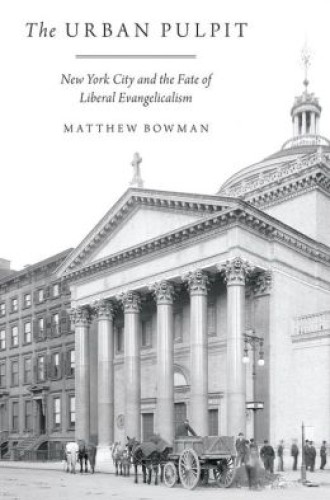The Urban Pulpit, by Matthew Bowman
Since the 1970s, culture warriors have been inventing an irreparable break between liberal and evangelical churches. But Matthew Bowman transports us to a time when evangelicalism as a “style of being religious” was still up for grabs.
His deeply researched and masterfully written new book invites readers to rediscover the once-powerful promise of liberal evangelicalism. Now that historians are returning to study liberal and ecumenical church leaders not named Niebuhr or Tillich, the question must be asked: What is there left to learn about these self-credentialed white male elites?
A lot, actually. For Bowman, liberal evangelicalism was a pastoral middle way between the secular city and fundamentalism. Liberal churchmen were at war with New York pluralism, commercialism, and social scientism as often as they accommodated to them. The term liberal evangelicalism itself was coined by Madison Avenue pastor and Union Theological Seminary president Henry Sloane Coffin, who claimed in 1915 that “we are liberals on behalf of our evangelicalism.”





